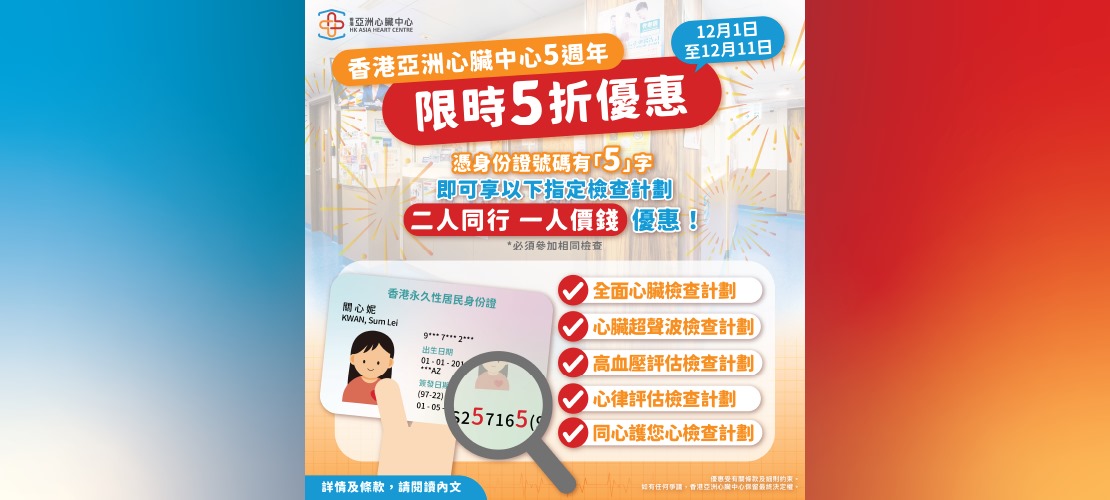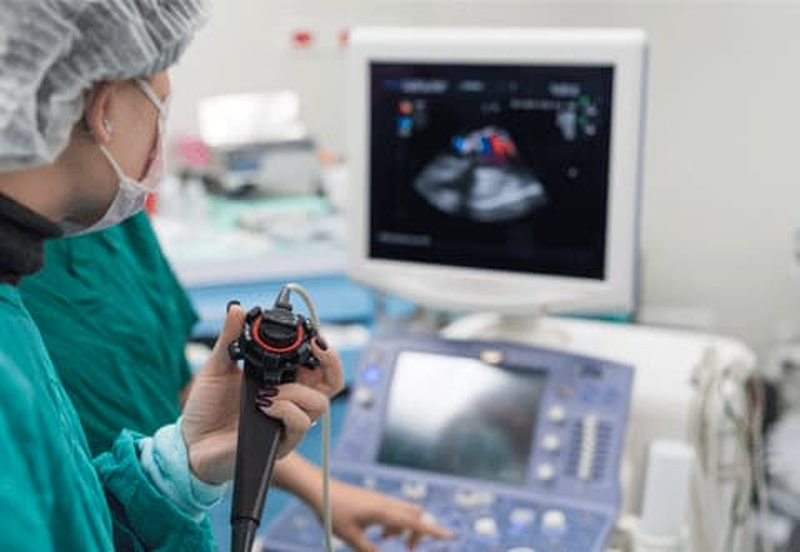Trans-Esophageal Echocardiography (TEE)
Trans-Esophageal Echocardiography (TEE) | Hong Kong Asia Heart Centre
Trans-esophageal echocardiography (TEE) aims at studying the structure and function of the heart. It is performed through introducing a probe of 1 cm in diameter through the mouth into the esophagus.
The close position of the esophagus to the heart allows the TEE to obtain a better visualization of heart structures. It can study the structure and function of the heart accurately, and diagnose congenital heart disease, cardiac masses, infection of heart valves and aortic dissection.
Suitability:
This procedure is suitable for anyone, except those who have swallowing problem, and history of operation in pharynx or esophagus.
Proccess:
- Blood pressure cuff, pulse oximeter and ECG leads will be connected. Your vital signs will be continuously monitored during the test.
- Denture must be removed.
- Right before the procedure, local anesthesia will be applied to the pharynx.
- You will be asked to lie in left lateral position.
- Low dose intravenous sedation may be given.
- The probe, which is at the tip of the endoscope, will be lubricated and slowly introduced into your esophagus with the assistance of the physician and your swallowing motion.
- The study takes around 10-15minutes, please relax during the examination. Dribbling out of saliva is expected.
- After the examination, the probe will slowly be retracted.
Risks:
Major complications: death, esophageal perforation, significant arrhythmias, congestive heart failure and aspiration, occurs with a frequency of 0.3% with reported mortality of less than 0.01%.
Sore throat and blood stained saliva is common and will recover in 1-2 days.
Trans-esophageal echocardiography (TEE) aims at studying the structure and function of the heart. It is performed through introducing a probe of 1 cm in diameter through the mouth into the esophagus.
The close position of the esophagus to the heart allows the TEE to obtain a better visualization of heart structures. It can study the structure and function of the heart accurately, and diagnose congenital heart disease, cardiac masses, infection of heart valves and aortic dissection.
Suitability:
This procedure is suitable for anyone, except those who have swallowing problem, and history of operation in pharynx or esophagus.
Proccess:
- Blood pressure cuff, pulse oximeter and ECG leads will be connected. Your vital signs will be continuously monitored during the test.
- Denture must be removed.
- Right before the procedure, local anesthesia will be applied to the pharynx.
- You will be asked to lie in left lateral position.
- Low dose intravenous sedation may be given.
- The probe, which is at the tip of the endoscope, will be lubricated and slowly introduced into your esophagus with the assistance of the physician and your swallowing motion.
- The study takes around 10-15minutes, please relax during the examination. Dribbling out of saliva is expected.
- After the examination, the probe will slowly be retracted.
Risks:
Major complications: death, esophageal perforation, significant arrhythmias, congestive heart failure and aspiration, occurs with a frequency of 0.3% with reported mortality of less than 0.01%.
Sore throat and blood stained saliva is common and will recover in 1-2 days.
Share


